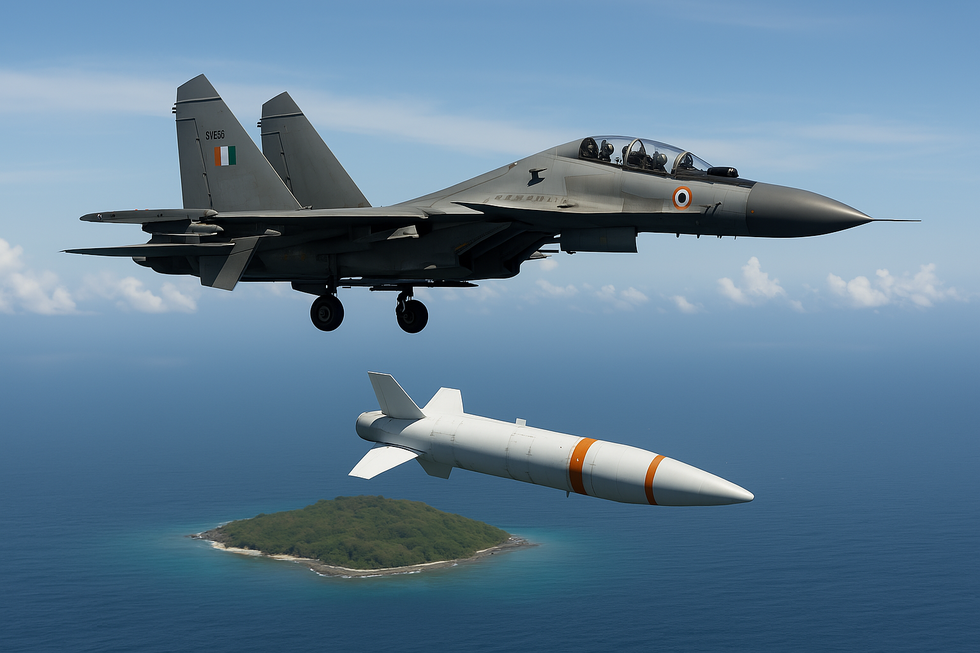




Disclaimer: Copyright infringement not intended.
Chief of Defence Staff General Anil Chauhan recently announced that India is in the final stages of formulating a Military Space Doctrine. A National Military Space Policy is also under development.
This comes in response to the increasing recognition of space as a warfighting domain especially as the world stands on the cusp of an era of space militarization.
Space is now considered the fifth operational domain of warfare alongside land, sea, air and cyber.
With rising global weaponisation and astropolitical rivalries India's doctrine aims to safeguard space assets, enhance deterrence and integrate space into national security architecture.
Rising Global Concerns Over Weaponisation of Outer Space
Russia vetoed a UNSC resolution by the US & Japan to prevent an arms race in outer space last year.
Global mistrust is growing as countries develop counter-space technologies including nuclear ASAT weapons.
Since Sputnik space has been militarized for reconnaissance, communication and missile guidance.
Militarization Trends
NATO declared space as the fifth domain of operations.
The US, Russia and China have established space commands and formulated doctrines to ensure space dominance.
2023 UN Working Group on space behavior failed due to lack of consensus reflecting deteriorating trust.
Geopolitical and Astropolitical Tensions
China’s advances in space including the Space Silk Road, satellite constellations and PLA’s strategic support force pose a security challenge.
Pakistan could benefit from Chinese tech and collaboration.
Other Security Considerations
Space-based threats include:
Kinetic attacks e.g., ASAT missile
Electronic warfare like jamming, spoofing
Cyber threats
Orbital collisions
India needs resilient systems to support Surveillance & reconnaissance, secure communications and navigation that is IRNSS/NavIC.
|
Year |
Development |
Significance |
|
1967–2023 |
India signed all major international space treaties (OST, Rescue Agreement, Liability Convention, etc.) |
Shows India’s commitment to responsible space behavior |
|
2010 |
Integrated Space Cell |
Established on June 10 2010 the ISC was India's initial step towards integrating space capabilities into its defense architecture. It was formed to address growing threats to India's space assets and to coordinate among the military, civilian agencies and the Indian Space Research Organisation. |
|
2018 |
Defence Space Agency (DSA) formed |
Operational since 2019 the DSA serves as the central organization for space-related defense operations. It is tasked with formulating strategies to protect India's interests in space and is expected to evolve into the Indian Defence Space Command consolidating military space operations. |
|
2019 |
Mission Shakti (ASAT test) |
Proved India's counter-space capability; joined elite ASAT club (US, Russia, China) |
|
2023 |
Indian Space Policy released |
Focuses on commercial space, lightly touches on military space |
|
2024 |
Military Space Doctrine & National Military Space Policy under formulation |
Major doctrinal and strategic shift |
|
2024 |
Antariksha Abhyas 2024 |
India conducted its first comprehensive space defense exercise integrating various defense agencies to simulate space warfare scenarios. This exercise underscores India's commitment to developing robust space warfare capabilities. |
|
Ongoing |
52-Satellite ISR constellation |
Enhances intelligence, surveillance and communication |
|
Ongoing |
Collaboration with QUAD, France, others |
Strengthening military and strategic space partnerships |
|
2017 |
GSAT-9 South Asia Satellite |
Boosted regional influence; excluded Pakistan |
Strategic Deterrence
Doctrine will aim to deter attacks on India’s space assets by projecting credible retaliatory capability.
Offensive & Defensive Capabilities
Develop
Space Situational Awareness
Enhance ability to track satellites, debris and threats in real-time.
Critical for orbital safety, conflict anticipation and early response.
Institutional Framework
Likely to result in
Legal and Normative Framework
The doctrine may align with International laws, National interests and India’s stance on non-weaponisation of space while preparing for contingencies.
31 of 52 ISR satellites to be built by Indian private companies.
Public private partnership with ISRO for Manufacturing and launch Dual use technology development.
Boosts Aatmanirbhar Bharat and fosters a military industrial space complex
India’s doctrine is a response to growing Chinese assertiveness and rising cyber and space based threats.
Enhances India’s voice in global platforms on space security.
Offers leverage in multilateral fora like UN, BRICS, QUAD etc.
Sources:
|
PRACTICE QUESTION Q. Discuss the significance of India's Military Space Doctrine in the context of emerging challenges in the space domain. How does it aim to integrate space capabilities into national defense strategy? (250 words) |











© 2025 iasgyan. All right reserved